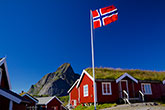A one-two punch for pool fires
Published by Will Owen,
Editor
LNG Industry,
New LNG facilities are being built to support the increasing global demand for energy, prompting a focus on the safety of these facilities. As companies look to shrink facility footprints, maintain safety, and operate in new ways – or in more populated areas – now may be the time to consider a multi-pronged approach to LNG pool fire suppression and cryogenic spill protection.
Although every site must have a spill containment area, taking a systematic approach to managing the risks generated by LNG may provide a cost-effective way to reduce thermal radiation and flame height while shrinking exclusion zones and maintaining facility and employee safety. Looking holistically at steps to manage fire risks includes examining ways to cap or cover spilled LNG, reducing and extinguishing flames, and planning to limit the amount of vaporised LNG available to burn by using a combination of tools such as the FOAMGLAS® PFS™ Generation 2 pool fire suppression system and FOAMGLAS® Cryo Spill™ Protection System. Using both technologies together to cover and line the LNG containment pit can deliver improved and cost-effective passive fire suppression.
LNG pool fire risk
One of the major hazards considered in the LNG industry is a pool fire – where a flammable vapour cloud of natural gas ignites. Natural gas can be ignited from multiple sources, including static electricity or the lighting of a match. Pool fires also may cause additional fires at a facility, explosions, or could potentially endanger employees.
When LNG spills – either from low-source pressures or in pressurised releases – the liquid can vaporise and generate invisible, flammable clouds of gas. In low pressure incidents, LNG can be moved to an impounding area or a sump can be used to reduce the amount of LNG that vaporises when the cold liquid boils upon coming into contact with the (comparatively warmer) ground, warm air, or solar radiation. High-pressure releases may generate flashing jets or sprays of the liquid. If the liquid is spilled, it can produce a visible cloud of water vapour, suggesting the presence of vaporised natural gas.
This is an abridged version of an article that was originally published in the December 2020 issue of LNG Industry. The full version can be read here.
Read the article online at: https://www.lngindustry.com/product-news/09122020/a-one-two-punch-for-pool-fires/
You might also like
Gasum opens new biogas filling station in Norway
Gasum has opened its ninth bio-LNG station in Norway, located in Førde.

